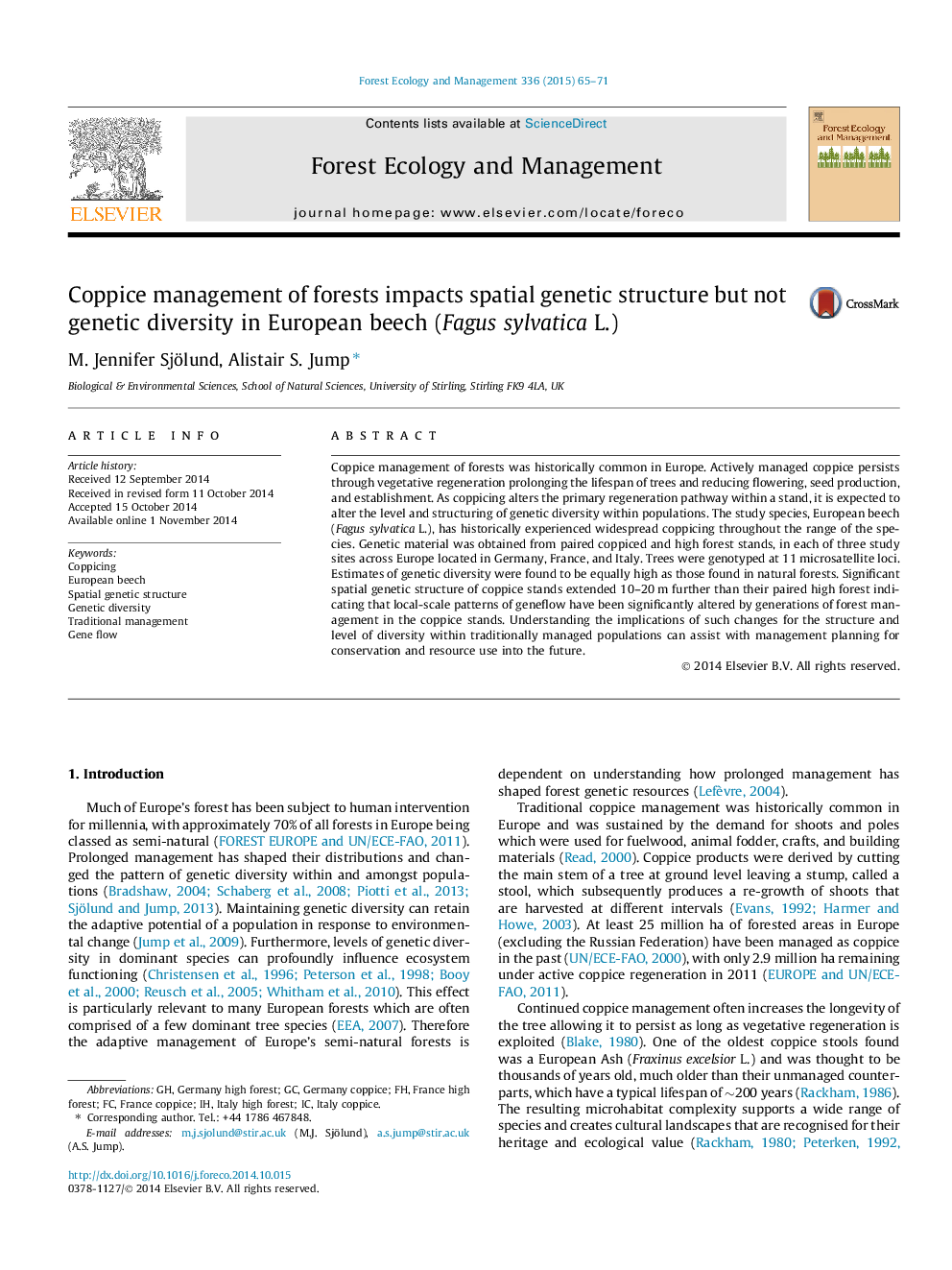| Article ID | Journal | Published Year | Pages | File Type |
|---|---|---|---|---|
| 86417 | Forest Ecology and Management | 2015 | 7 Pages |
•We assessed genetic diversity and spatial genetic structure in paired Fagus sylvatica coppice and high forest stands.•Coppice forests can be as rich in genetic diversity as natural forests.•Coppiced stands displayed significant spatial structure extending 10–20 m further than their high forest counterpart.•Local-scale patterns of geneflow were significantly altered by generations of forest management in the coppice stands.•Genetic legacies of forest management should be considered in the conservation and use of forest genetic resources.
Coppice management of forests was historically common in Europe. Actively managed coppice persists through vegetative regeneration prolonging the lifespan of trees and reducing flowering, seed production, and establishment. As coppicing alters the primary regeneration pathway within a stand, it is expected to alter the level and structuring of genetic diversity within populations. The study species, European beech (Fagus sylvatica L.), has historically experienced widespread coppicing throughout the range of the species. Genetic material was obtained from paired coppiced and high forest stands, in each of three study sites across Europe located in Germany, France, and Italy. Trees were genotyped at 11 microsatellite loci. Estimates of genetic diversity were found to be equally high as those found in natural forests. Significant spatial genetic structure of coppice stands extended 10–20 m further than their paired high forest indicating that local-scale patterns of geneflow have been significantly altered by generations of forest management in the coppice stands. Understanding the implications of such changes for the structure and level of diversity within traditionally managed populations can assist with management planning for conservation and resource use into the future.
